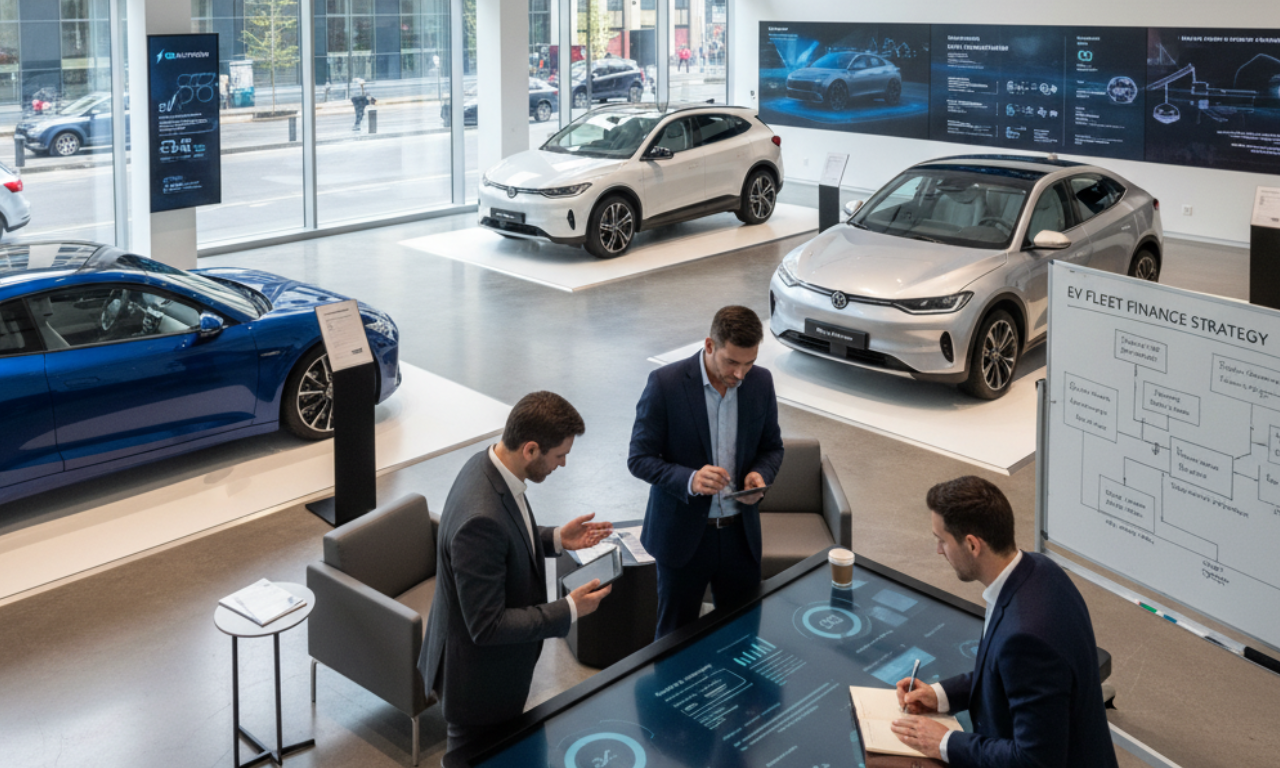Captive Finance Arms: Why OEMs Are Building Their Own Banks

In October 2025, the headlines were about record EV sales. Beneath those numbers, however, another transformation was underway-one that’s rewriting how EVs are financed. Bajaj Auto’s Chetak Finance, TVS Credit, and Hero FinCorp didn’t just enable sales; they became growth engines for their parent OEMs.
Captive finance-the practice of manufacturers owning or controlling their lending subsidiaries-is not new in automotive markets. What’s new is its resurgence as a strategic necessity in India’s electrification journey. With affordability and credit access defining EV adoption, OEMs are building their own financial ecosystems to control pricing, underwriting, and lifetime value.
The Strategic Motive
For decades, OEMs relied on banks and NBFCs to move inventory. But as EVs introduce higher upfront costs, battery dependencies, and resale uncertainties, external lenders often hesitate. Captive finance arms bridge that gap.
They allow OEMs to:
-
De-risk demand cycles by offering in-house retail loans and dealer credit.
-
Accelerate adoption through customised EMIs, battery-subscription bundling, and seasonal schemes.
-
Control data and margins across the customer journey.
In 2025, this model evolved from convenience to core strategy, positioning finance as the differentiator in the EV race.
Relevancy: Lessons from October 2025
Market data showed that OEMs with captive or allied finance arms dominated sales. Bajaj Auto (13 536 units) and TVS Motor (13 198 units) led the two-wheeler segment, supported by their in-house credit networks. Hero Vida’s Battery-as-a-Service and assured buyback plans, funded through Hero FinCorp, offered a tangible affordability edge.
These structures achieved more than volume-they deepened loyalty. Captive lenders know the asset, the technology, and the user. This proximity enables smarter credit scoring and faster loan turnaround, essential for Tier-2 and Tier-3 markets where paperless financing is the new norm.
Technology: The Enabler of Modern Captives
Traditional captive lenders ran on legacy systems. The new generation operates as fintech entities inside manufacturing organisations. Cloud-native loan origination, API-based verification, and AI-driven scoring now define their operations.
-
Digital Underwriting: Combines purchase intent, telematics, and repayment history.
-
Instant Disbursal: Integrates with digital payment rails such as UPI AutoPay.
-
Lifecycle Analytics: Monitors asset health to refine residual-value estimation.
This tech foundation allows OEMs to scale financing faster than conventional NBFC partners and offer near-real-time approvals at dealerships or online checkouts.
Captive vs Partnership: A Strategic Trade-off
Many OEMs still partner with external NBFCs-VinFast with SBI, Piaggio with RiseWise, Greaves Electric with Perpetuity Capital. These alliances provide reach but not control. Captive finance arms, by contrast, integrate margin capture and customer retention but require significant regulatory and capital compliance.
Forward-thinking OEMs adopt a hybrid approach-owning the core lending infrastructure while co-lending with NBFCs to balance risk and scale. This dual model is emerging as the blueprint for India’s EV decade.
Market Dynamics and Policy Support
Policy momentum reinforces the captive movement. Under the Delhi EV Policy 2.0, low-interest financing and scrappage incentives increased loan viability. Uttar Pradesh’s localisation rule added tax rebates for vehicles assembled in-state, strengthening OEM financing economics.
These measures, coupled with RBI’s open-data frameworks and fintech-licensing clarity, make it easier for OEMs to operate or affiliate with NBFCs under compliant structures.
Financial Performance Outlook
Captive arms can improve OEM EBITDA by 1.5–2 percentage points through interest income, insurance bundling, and extended-warranty financing. They also generate valuable data assets-loan-performance insights that guide pricing and product design.
Analysts expect that by 2027, over 40 % of India’s EV loans could originate from captive or semi-captive institutions, mirroring trends in mature automotive markets.
Repositioning the Dealer Network
Dealers remain the operational backbone. Captive finance arms enable real-time credit limits, faster settlements, and integrated CRM dashboards. This turns the dealership from a transactional outlet into a financial node of the OEM ecosystem.
For CXOs managing distribution, the implication is clear: financing strategy must align with channel design. Data-driven liquidity support ensures dealers can focus on customer experience instead of cash flow.
The Investrong textstor View
Global investors view OEM captives as long-term yield assets. With stable collateral and predictable repayment behaviour, captive portfolios attract institutional funding via securitisation and green bonds.
Recent activity-such as Mirova’s investment in Revfin and NIIF Japan Fund’s infusion into EKA Mobility-reflects appetite for structured EV lending vehicles. Captive arms with transparent data and ESG alignment are poised to become preferred partners for climate-finance capital.
Conclusion: From Vehicle Makers to Financial Ecosystem Builders
The EV revolution is redefining what it means to be an OEM. Manufacturing excellence alone no longer guarantees leadership; financial orchestration does. Captive finance arms transform OEMs from sellers into enablers-managing risk, credit, and loyalty in one continuum.
As competition intensifies, those who master this integration will own not just the vehicle but the entire customer journey-from credit approval to battery replacement. For India’s EV future, the real differentiator won’t be torque or range-it will be the strength of the balance sheet behind every scooter, bike, and car.
At GrowthJockey, we believe India’s EV story will only reach full maturity when financial innovation catches up with technological progress. As venture architects, we help enterprises bridge that gap designing and scaling digital-first ecosystems that drive both adoption and profitability.
Our venture tools, including Intellsys.ai and Ottoscholar, enable organizations to turn insights into action transforming finance, data, and experience into one connected growth engine.
FAQs
Q1. What is a captive finance arm?
Ans. A captive finance arm is a lending subsidiary owned or controlled by an OEM to provide retail, dealer, or fleet financing for its own products.
Q2. Why are OEMs creating captive finance arms now?
Ans. As EV adoption grows, OEMs need tighter control over affordability, credit risk, and customer experience-making in-house finance a strategic requirement.
Q3. How do captive finance arms differ from bank partnerships?
Ans. Captives integrate directly with the OEM’s systems, retaining margins and customer data, whereas banks act as independent lenders with limited product alignment.
Q4. What’s the future outlook for captive EV financing in India?
Ans. By 2027, captive and hybrid financing models could account for nearly half of EV loans, supported by digital underwriting and policy incentives.








